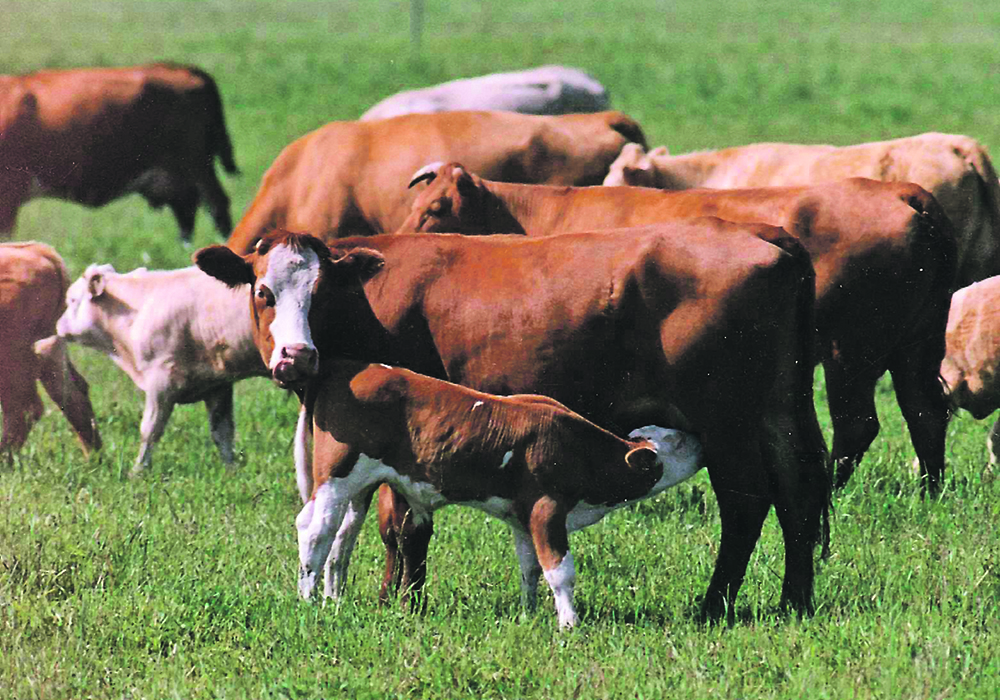The use of growth-promotant implants in nursing calves is one of the most cost-effective strategies for improving growth and feed efficiency in the pre-weaning period. Implants have been shown to make a significant increase in weaning weights of calves in many research trials.
The weaning weight improvements are often at least 15 to 30 pounds greater than non-implanted calves. Growth implants are widely adopted in the feedlot industry, but despite the economic benefits of implants, surveys have shown that less than 20 percent of cow-calf producers use implants in their suckling calves.
Read Also

Manitoba extends Crown land rent freeze
Manitoba government links the continued rental rate freeze on grazing and forage leases to economic and environmental challenges facing the industry
Growth implants are small slow-release pellets that are inserted under the skin of the ear. The implants used in nursing calves typically contain hormones that mimic natural hormones in the calf such as estradiol, progesterone or zeranol. The implant matrix slowly releases very tiny amounts of hormones so the calf is exposed to very small quantities.
The hormones act to enhance muscle development and will help to increase overall growth and weight gain. If bull calves are castrated, the use of growth implants will compensate for the loss of hormonal influence of the testicles, allowing the implanted steer to gain weight at a similar rate to an intact bull calf.
Caution should be exercised with using implants for breeding stock. Bull calves that are intended for breeding should never be implanted and there are some concerns about using implants in heifer calves, with regards to influencing subsequent fertility.
This has been researched extensively and most research suggests that implanting a heifer calf once when older than a month does not have a negative impact when it reaches puberty. A recent paper in the Journal of Animal Science written by researchers at New Mexico State University evaluated the impact of implanting nursing heifer calves and whether the implant would impact fertility and subsequent pregnancy rates.
The researchers used 233 Angus-Hereford crossbred heifers for their trial and split them into three groups, which included 82 heifers implanted at about two months of age with Synovex-C implants, 72 heifers that were implanted at seven months of age with Synovex-C and 69 heifers that served as non-implanted controls.
The researchers evaluated follicle counts of the ovaries by ultrasound in years two and three and evaluated the size of the reproductive tract and ovarian structures. All of the heifers were estrus synchronized and then artificially inseminated based on estrus detection. Ten days after the last day of AI, the heifers were exposed to breeding bulls for about 60 days.
The heifers that received a growth implant at two months of age had an average weight at weaning of 234 kilograms as compared to the other heifers at 219 kg. That is a 15 kg difference in weaning weight, which certainly proves the cost-effectiveness of using implants.
This body weight advantage was carried through to the weight of the heifers as yearlings and at the time of breeding. It was interesting that the implant at weaning did not provide the same advantage in weight gain.
The researchers compared the follicle count on the ovaries, the uterine horn diameter and reproductive tract scores and could find no differences between the heifers that were implanted and the non-implanted heifers.
The researchers also compared the proportion of heifers that reached puberty as a yearling and prior to breeding and there were no significant differences between the implanted heifers and the non-implanted heifers. First service conception rates and overall pregnancy rates were also statistically similar across all groups, although the first service conception rate was a little bit higher for the control heifers.
This research confirms our previous understanding that administration of a growth promoting implant in nursing heifer calves (older than one month) had a positive impact on weaning weight without negatively affecting ovarian development, the onset of puberty or pregnancy rates.
There are markets for calves that have not received growth implants and if you are able to benefit from accessing those markets, you should certainly take advantage of that. However, if you tend to conventionally market your weaned calves, you should consider using growth implants in nursing calves as a cost-effective strategy for improving weaning weights.
The research shows that implants improve weaning weights and implanting nursing heifers once does not impact their future reproductive viability. It should be noted that it currently is not recommended to implant heifers intended for breeding more than once. This has been shown to have negative consequences on future reproductive performance. Your veterinarian can help you with selecting an appropriate implant strategy for your herd and in providing technical advice on how to administer growth implants.















